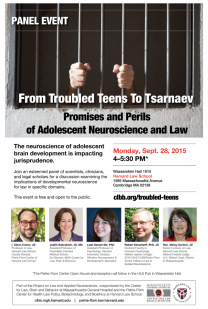By Virginia Gewin | Nature | October 15, 2015
In October 2006, Bradley Waldroup attacked his estranged wife with a machete and shot her friend to death. In the subsequent trial, his defence attorney argued that Waldroup had the ‘warrior’ gene — a genetic variant that has been linked to aggression. As a result, the defence argued, he was less able to control his behaviour than are people who do not have the variant.
Although he had been charged with first-degree murder of the friend and attempted first-degree murder of his wife, Waldroup was convicted in 2011 of voluntary manslaughter and attempted second-degree murder, and received a 32-year sentence. Had he been found guilty of the more-serious charges, he would have faced the death penalty. Waldroup’s conviction was due, at least in part, to the testimony of forensic psychiatrist William Bernet of Vanderbilt University in Nashville, Tennessee. News stories at the time quoted jurors as saying that the genetic evidence persuaded them that Waldroup could not fully control his actions. Bernet’s research had linked the genetic variant and a history of abuse during childhood—both of which Waldroup had—to an increased likelihood of violent behaviour.
The outcome outraged many in the US legal and scientific communities, who considered the genetic link much too distant to be used to establish guilt. “The leap from population studies of the ‘warrior gene’ to a single man and a single gene variant was absurd,” says Judith Edersheim, a lawyer-turned-psychiatrist at Harvard Medical School in Boston, Massachusetts. And the trial is not the only example of what she describes as “neuroscience run amok in the courtroom”. Continue reading »




